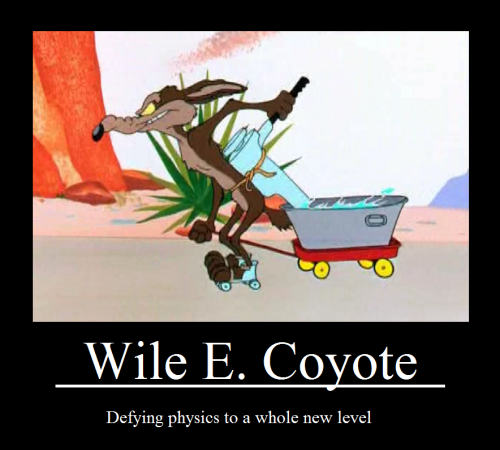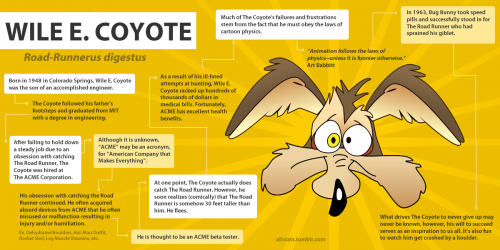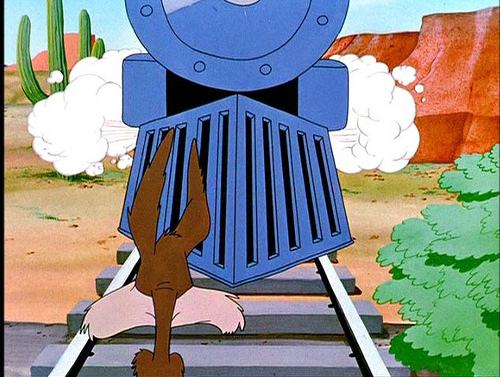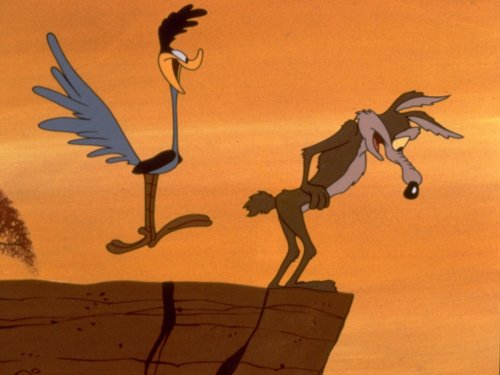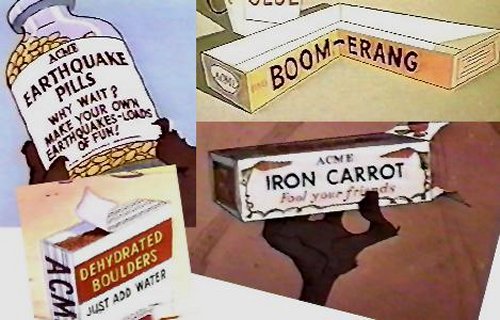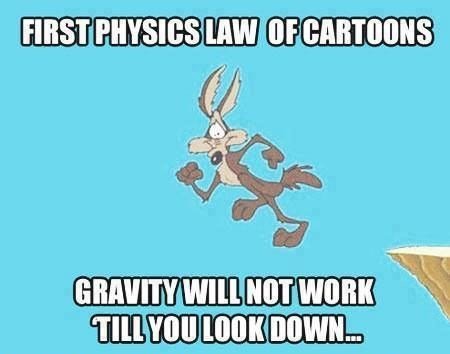Wile E. Coyote. Hero or villain? This is your chance to read a totally bias view of the artist, tester and, quite terrible, hunter.
The below graphic shows the basic time line of Wile E.’s life and accomplishments over the years whilst he was in his prime.
I will also have to take inspiration from the “Rules of the cartoon”. Taken from Chuck Amuck: The Life and Times of an Animated Cartoonist.
The rules are quite simple, sometimes ignored but all in all, they do sum up all the cartoons that they appear in. From being picked out of the obscurity of toon town in 1947 and starred in Fast and Furry-ous to his last outing in 2010 with Rabid Rider
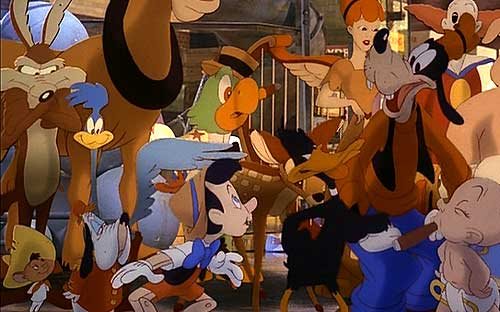
The Road Runner cannot harm the Coyote except by going “beep, beep.”
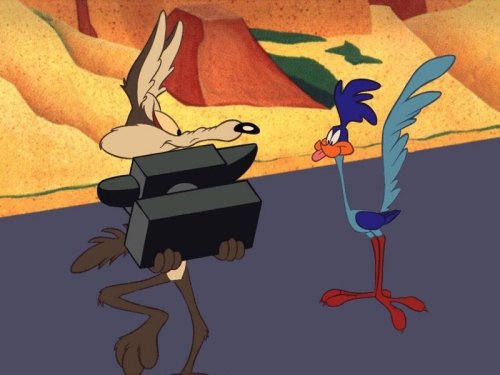
No outside force can harm the Coyote — only his own ineptitude or the failure of Acme products.
This is where most of the laughs tend to come from. Figuring out how, and when, the dangerously put together Acme product is going to fail.
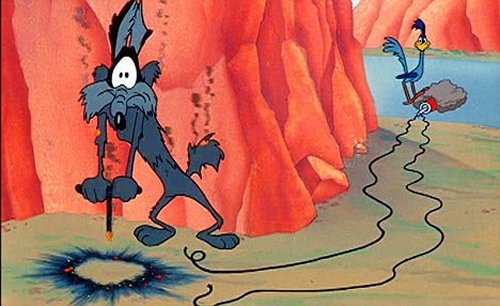 This was mostly true but occasionally we saw Wile E. being hit by trains or run over by an Acme truck, all seemingly driven by the, villainous, Road Runner.
This was mostly true but occasionally we saw Wile E. being hit by trains or run over by an Acme truck, all seemingly driven by the, villainous, Road Runner.
The Coyote could stop anytime — if he were not a fanatic.
“A fanatic is one who redoubles his effort when he has forgotten his aim.” — George Santayana
Another good quote about being a fanatic comes from Winston Churchill:
Dialogue must never be used, except “beep, beep” and yowling in pain.
This rule, however, was violated in some cartoons. It’s normally Wile E. that breaks this rule. Normally with grunts and sighs.
The Road Runner must stay on the road — for no other reason than that he’s a roadrunner.
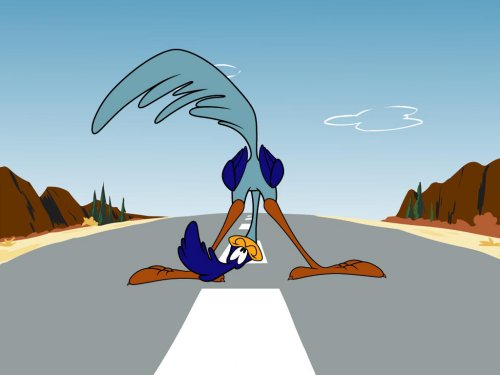 This rule was broken in Beep, Beep, in a sequence where Wile E. chased the Road Runner into a cactus mine. And also in Fastest with the Mostest when Coyote lures Road Runner to the edge of a cliff.
This rule was broken in Beep, Beep, in a sequence where Wile E. chased the Road Runner into a cactus mine. And also in Fastest with the Mostest when Coyote lures Road Runner to the edge of a cliff.
All action must be confined to the natural environment of the two characters — the southwest American desert.
In the real world the area isn’t that much dissimilar to what is dispirited in the cartoons.
All (or at least almost all) tools, weapons, or mechanical conveniences must be obtained from the Acme Corporation.
There were sometimes exceptions when Wile E. obtained other items from the desert such as boulders to use in his attempts. Ace, A-1 and Ajax were also on the list at one time but they must have been more expensive than his usual supplier, Acme.
Whenever possible, make gravity the Coyote’s greatest enemy (e.g., falling off a cliff).
Gravity mixed with “Cartoon physics” gives an even better way of keeping the audience involved and amused as you never can tell when the final plunge will occur!
The Coyote is always more humiliated than harmed by his failures.
This can be summed up by the face of annoyance when the above rule kicks in and the plumeting to a painful conclusion occurs.
The audience’s sympathy must remain with the Coyote.
With the vicious, evil, attacks from the Road Runner and the pain that he inflicts on the hapless Coyote. This makes it easy for the audience to feel sorry for the hapless predictor. From being blown up, falling off cliffs as well as any other ingenious ways that Acme products fail…
The Coyote is not allowed to catch or eat the Road Runner, unless he escapes from the grasp.
Seth MacFarlane has his own take on what would happen if Wile E. actually caught his prey. In an short from his Cavalcade Of Cartoon Comedy.
There are quite a few “rude words” in the short so don’t complain if you’re offended as I have warned you about them!
Yes, I know this isn’t cannon but sometimes you have to step outside to prove a point 😛
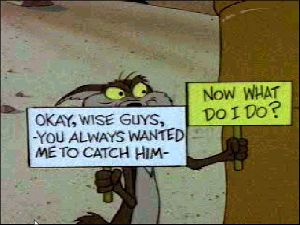 In the cartoons the Road Runner has been caught a couple of times; once by a robot that is created in The Solid Tin Coyote catches the Road Runner but doesn’t know what do do and as such the Road Runner escapes.
In the cartoons the Road Runner has been caught a couple of times; once by a robot that is created in The Solid Tin Coyote catches the Road Runner but doesn’t know what do do and as such the Road Runner escapes.
A truely successful catching of the Road Runner appears in Soup or Sonic but he ends up too small to eat him. This is due to him running through pipework that makes him smaller and smaller!
I will end this long post with a couple of things I found on the interweb that sums up what I think Wile E. stands for:

